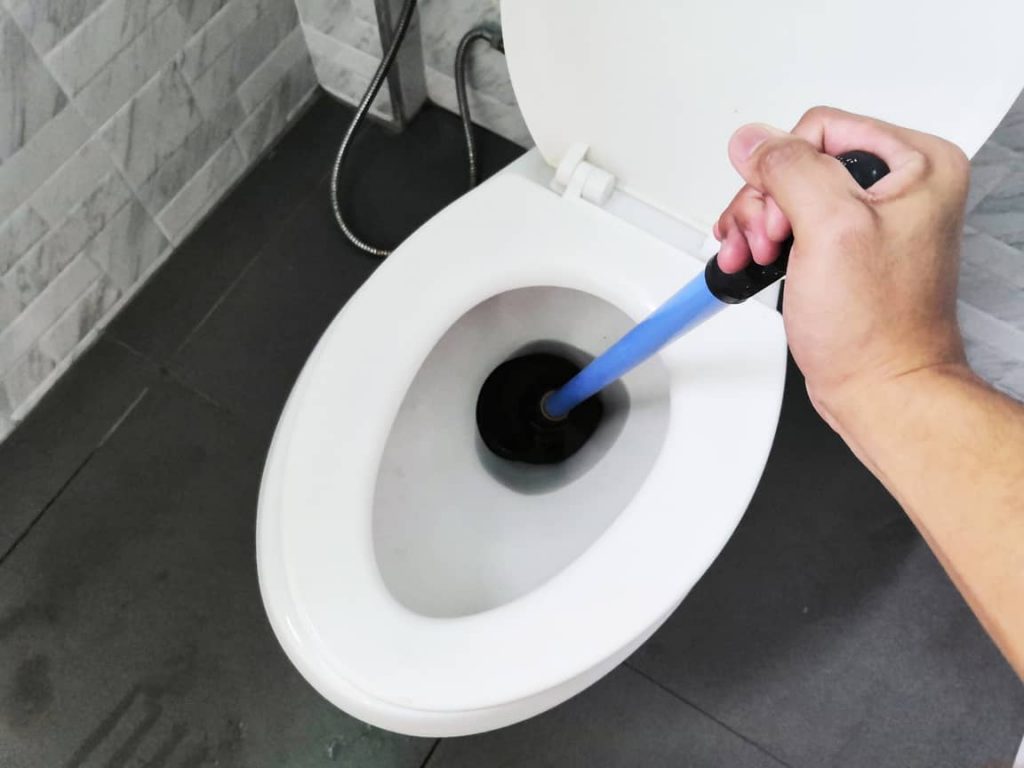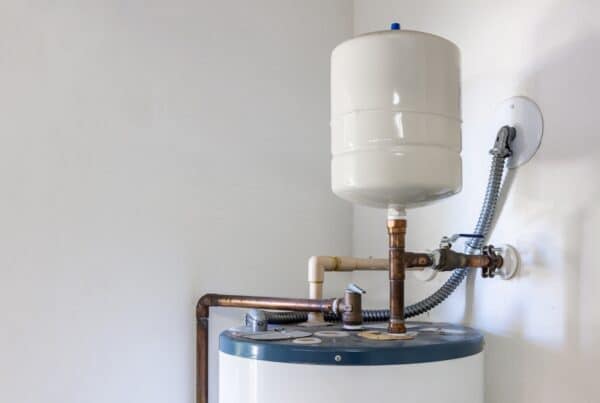
Having the proper equipment at your disposal in each bathroom is a great idea. Equipment such as a simple plunger and maybe some rubber gloves for protection from bacteria are necessary for your bathroom. On many occasions, a homeowner might find themselves using a toilet in their bathroom and after flushing, the water and waste just refuse to go down. This can be caused by a few reasons. What causes a toilet to overflow? Clogged drain, blocked vent pipe, or higher float is reasons to cause your toilet to back up and overflow.
Let’s take a look at those reasons below and go into some specifics to help save you time and money.

What Makes Up A Toilet
There are many working parts within your toilet. Understanding that maintenance is often needed on these parts can save you from any excess damage to your bathroom floor or walls. Here is a list of what comprises your toilet.
- Toilet Tank – collects replacement water for each flush of your toilet.
- Toilet Bowl – houses water and all of your waste to be flushed.
- Shut-off Valve – shuts off the water supply to your toilet tank with the twist of a knob.
- Floor Flange – keeps the toilet bowl attached to the plumbing pipe on the floor of your home.
- Wax seal – used between the toilet bowl and the drainpipe of your home and in-ground plumbing pipe.
- Handle- initiates the opening of the flapper so that water can go from the tank to the bowl.
- Refill tube – pulls water from the water line and refills the tank with every flush.
- Float ball – elevates with the water refill in the tank so that the refill tube knows when to shut off adding replacement water to the tank.
- Chain – used to connect the handle to the flapper, so water can enter the bowl from the tank.
- Flapper – opens when the handle elevates the chain to open the flapper and allow water into the bowl.
- Tank O-rink seal – used to seal the toilet bowl and the toilet drain from water leaking at its connection.

Why Does This Happen
Luckily for the homeowner, there are typically only a few ways that cause a toilet to overflow.
- Clogged drain – excess toilet paper, or discarding of materials that don’t drain easily, such as feminine products can all cause your toilet to clog. As you continue to attempt to flush your waste down, the water from the toilet tank enters the bowl and begins to fill so high that the bowl overflows.
- Blocked vent – vent pipes allow air to re-enter your plumbing system to replace the air used to push the water through your pipes with each flush. If blocked, this can cause your toilet to not flush properly and cause a back-up of water.
- Higher float – when this happens, the float in your tank is allowing too much water to enter the toilet tank. Water will begin to overflow from the sides of the tank, rather than the bowl itself. Adjusting the height of your toilet float will fix this immediately.
- Septic – if you have a septic system, it is possible that your septic tank is full and needs to be drained. Once the tank has reached its maximum capacity, your toilets and other drains will not be able to push water and waste into the tank.
How Can I Prevent This
There are steps that you can take to avoid causing your toilet to overflow. Of course, not attempting to flush items that do not belong in your plumbing system is key.
Let’s look at the steps to take to reduce the causes of a toilet overflowing.
- Don’t Flush Twice – once you have determined that the water level is rising and a clog has occurred, you should not attempt to flush the toilet again. Adding excess water to the toilet bowl can only cause bigger issues.
- Find the Flapper – located in the tank of your toilet, the flapper controls when and how fast water is replaced in your toilet bowl. Once the toilet is flushed, the flapper opens allowing replacement water to flow from the tank to the bowl. Make sure that it is closed and the seal is aligned properly with the tank to stop water from flowing into the bowl.
- Shut-off the Water – locate your shut-off valve behind the toilet bowl. It is typically in the wall at the mid-line of the back of your toilet bowl. The toilet bowl often covers up the shut-off valve. Shut off the water at this time.
- Find the Float – inside the toilets tank you will have a float. It looks like a rubber egg that floats on the water in the tank. As the water rises the float tells the fill valve when to stop adding water into the toilet tank. Make sure the float stays in place and no additional water is added to the tank.
- Now Plunge – as soon as you get the water under control you can begin plunging the toilet bowl to attempt to loosen the clog. Use a rubber flange plunger to accomplish this task. Make sure to create an airtight seal and push up and down for 10 to 20 seconds.
- Drain Snake – if plunging of your toilet is unsuccessful, you will need to use a plumbers snake to push through your drain pipe and loosen the drain clog located in your sewer line.

Do Not Flush
Maintain your diligence with flushing items in your toilet. Especially if you have small children who do not otherwise understand that many items do not belong in a toilet bowl. Keep all environmentally hazardous items out of the toilet. Do “NOT” flush these items.
- Feminine Hygiene Products
- Items made of plastic or rubber
- Baby Diapers
- Prescription or Over-the-Counter (OTC) medicines
- Various House Cleaners
- Cooking Grease or Motor Oils
- House Paints
- Beauty Products
How Much Does It Cost
The cost to repair a toilet because it is overflowing varies depending upon the cause of the overflow. Keep in mind that if your vent simply needs clearing due to a clog, you are likely paying a plumbing contractor $85 to $100 for their hourly labor. If you have parts needing replacement then you can typically purchase these items at any local hardware store.
Those costs will vary depending on your needs. Additionally, if you need to replace the entire toilet, this would be your most expensive item. Having a professional plumbing contractor replace your toilet could cost you $300 to $500. Basic professional plumbing repairs can average $150 to $350 for parts and labor.
Other Recommended Maintenance
One of the first steps to understanding how to fix an overflowing toilet is knowing where the toilet water goes. Reading up on the various working parts of a toilet as well as how and where the water travels to is key.
When Do I Call A Professional
Hiring a professionally licensed master plumber is key to your toilet success. Although you might be able to make a few fixes to your toilet system, it is always best to hire and consult a master plumber. They will be able to ensure that you do not accidentally break something or flood your bathroom. Flooding your bathroom can cause additional damage to your home. Also, they can tell you what causes your toilet to overflow.
At the same time you are looking to hire a professionally licensed master plumber, go ahead and call on your local home inspection team. They can inspect all of your plumbing during a full home inspection. The overflowing toilet could potentially be a result of damage to your plumbing system. So, getting it inspected first and then receiving a reputable referral is your best bet here.
Conclusion
Being a homeowner can become very stressful and taxing at times. Most do not have additional hours in their day to focus on home maintenance and learning how to repair various issues that arise. Also, overflowing toilets are sometimes an easy fix and sometimes lead to great issues in plumbing. What causes your toilet to overflow? It is a great idea to consult your local home inspection team at this time.
They can conduct a full home plumbing system inspection that could lead to a recommendation of a reputable professionally licensed master plumber. Call on Alpha building inspections to conduct a home inspection in Merrimack, New Hampshire, and surrounding areas.



